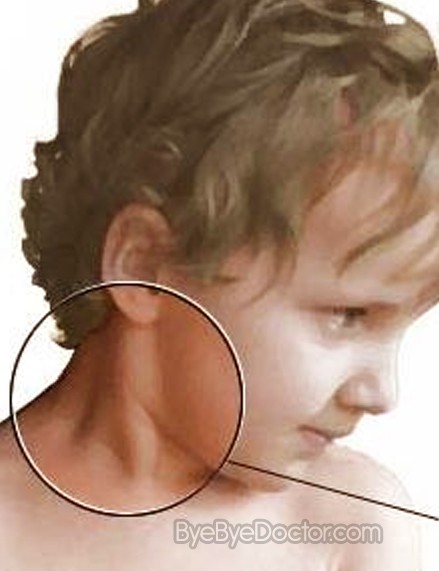Torticollis
Last reviewed by Dr.Mary on August 7th, 2018.
What is Torticollis?
This is a condition also referred to as cervical dystonia and also known as spasmodic torticollis or just torticollis. This is a condition which is painful and is caused by the neck muscles involuntarily contract, causing the head to twist one side to the other. It can also cause the head to uncontrollably tilt backward and forwards.
Torticollis is a disorder which is rare and can develop at any age, even at infancy but it most often develops in women who are middle-aged. The symptoms begin gradually and reach a point where they do not get any worse.
Torticollis has no cure but the disorder often resolves on its own. Botulin toxin injected into the muscles which are affected can often reduce the symptoms and signs of torticollis. Surgery can be necessary but this is very rare.
Torticollis Symptoms
Twisted neck
The contractions of the muscle involved in torticollis will cause the head to twist in an assortment of directions, which include:
- Chin toward shoulder
- Chin straight up
- Ear toward shoulder
- Chin straight down
The most frequent sort of twisting linked with torticollis is the chin being pulled towards the shoulder. Some individuals experience a mixture of head postures which are atypical. Jerking motion of the head can also occur.
Pain
Approximately 2/3 of individuals who have torticollis also will experience pain in the neck which radiates into the shoulders. This disorder can also cause headaches which are severe. In many individuals, the pain from torticollis can be disabling as well as exhausting.
Tremor
Torticollis can also cause tremors in the hand or arm.
Shoulder elevation
This disorder can also cause the shoulder on the affected side to pull up towards the ear.
Since torticollis is caused by unusual contractions of the muscles on one side of the neck, individuals may appear with the head turned to one side. The muscles of the neck as well as those amid the shoulder and neck will be tender and tense.
Individuals with torticollis will customarily be reluctant to turn their head to one side and may have their head turned somewhat away from the side of the uneasiness.
If any of the following symptoms occur, the individual should see their physician immediately as they suggest irritation or injury to the central nervous system:
- Trouble swallowing or breathing
- Pins and needles feeling or numbness in arms or legs
- Urinary or fecal incontinence, urinary hesitancy
- Weakness in legs or arms
- Impaired speech
- Difficulty walking
Torticollis Causes
Scientists believe that the symptoms of signs or torticollis can result from a problem in the brain’s ability to manage chemical messages which allow the cells of the brain to communicate with each other.
In many cases of this disorder, physicians do not know why some individuals develop the disorder and others do not. In some cases, it appears to be linked to:
- Shoulder, neck or head injuries
- Strokes
- Brain or spinal cord tumors
- Drugs such as antipsychotic, anti-nausea as well as antidepressant agents
- Toxins, such as carbon monoxide and heavy metals
Risk factors for torticollis include:
Age
While this disorder can occur at any age, even infants, it most commonly begins between the ages of 40 and 60.
Sex
Women as nearly twice as likely as men to develop torticollis.
Family history
If a close member of the family has torticollis or any other movement disorder, an individual is at a risk of developing the disorder.
Torticollis can lead to:
Nerve damage
The sustaining of contractions of the muscle linked with torticollis can cause permanent injury to the compressed nerves. The symptoms include numbness, tingling as well as pain.
Other parts of the body involvement
In some individuals who begin with Torticollis, it eventually can develop similar symptoms in the arm, trunk, jaw, or face.
Depression
The pain and disability that may be caused by torticollis may cause depression in the individual.
Torticollis Treatment
The treatment for torticollis is aimed at relaxation of the contracted muscles of the neck which are involved. These treatments can include drugs, physical devices, botulin toxin, as well as surgery. In many individuals, torticollis will resolve by itself in several days to a few weeks. In a few individuals, continuing problems with the neck may continue for months even years. If these neck muscle spasms persist the doctor may refer the individual to a neurologist or surgeon.
Torticollis Medications
If the torticollis was caused by trauma or by drugs, the primary care physician may prescribe anti-inflammatory medications as well as muscle relaxants. These medications normally relieve the symptoms within a couple of days. Common medications used to treat acute, torticollis which is spasmodic include:
- Benztropine (Cogentin)
- Diphenhydramine (Benadryl)
These medications are normally given into the muscle or by IV. The physician may add oral relaxants or benzodiazepine such as:
- Ativan
- Valium
These medications are continued in oral form for 48 to 72 hours to avoid any symptoms to recur. Massage therapy and ice packs may also be used for relief as needed.
If the individual has neck muscle spasms which are chronic, a neurologist can give local injections of botulinum A toxin. This toxin comes from Clostridium botulinumbacteria.
This toxin acts locally to prevent the muscle from contracting in those where it is injected. This toxin usually can stop torticollis from getting worse and can even lead to complete recovery.
Torticollis Surgery
Surgery is frequently reserved for only a very few worse cases. With this treatment, some of the nerves in the upper neck are selected to be separated in order to prevent muscle contraction. This treatment normally helps but sometimes the neck will return to its twisted position after a number of months.





I’m 30 years old. I have had torticollis since I was born. I’m 100% disabled because of it.I’m in bad pain all the time. Looking for pain management doctor in fortworth or Dallas area. It don’t get better just gets worse. I’ve had 2 surgery’s on need another one.
i came across your name and your condition of torticolis which i have as well as cervical spinal stenosis and i am interested if you have found any meds or treament that has helped you with the pain, i have had three surgeries and have not helped.
Jennifer,
I’ve had this condition for over 25 years, began in my 40’s. I have found that injections of Botox have helped it tremendously, plus a medication to help ease the dystonia. I hope that you can find a doctor that can treat you with this, for it has helped me tremendously. I’m fighting now to get my Medicare drug plan to approve it in their formulary, although Medicare Part B is the actual one that pays for the Botox and injections. As with any government agencies, it’s always a battle to get something that helps approved. My best wishes that you get better. I actually feel like an actual human being for the first time in years.
Ramona
I am trying to help my doctor know where to inject the botox. My head twists to the left. From what I am reading, the botox should be injected into the left side of my neck. Do any of you have any experience with this issue?
I was born with this condition and had surgery when I was 5 years old. For several years now I have had neck pain, muscle spasms, nerve problems, sore jaw, clenching of my teeth, headaches and trouble sleeping. Not sure what to do. I am just now getting insurance but will most likely have a waiting period due to pre existing condition. Does anyone have any advice/tips on how I can “get by” for a few months?
I have been having botox injections for two years, they have worked great for me. However my doctor always injects me on both sides of my neck and also in the muscle in the back of my neck/head area. my life has improved greatly.